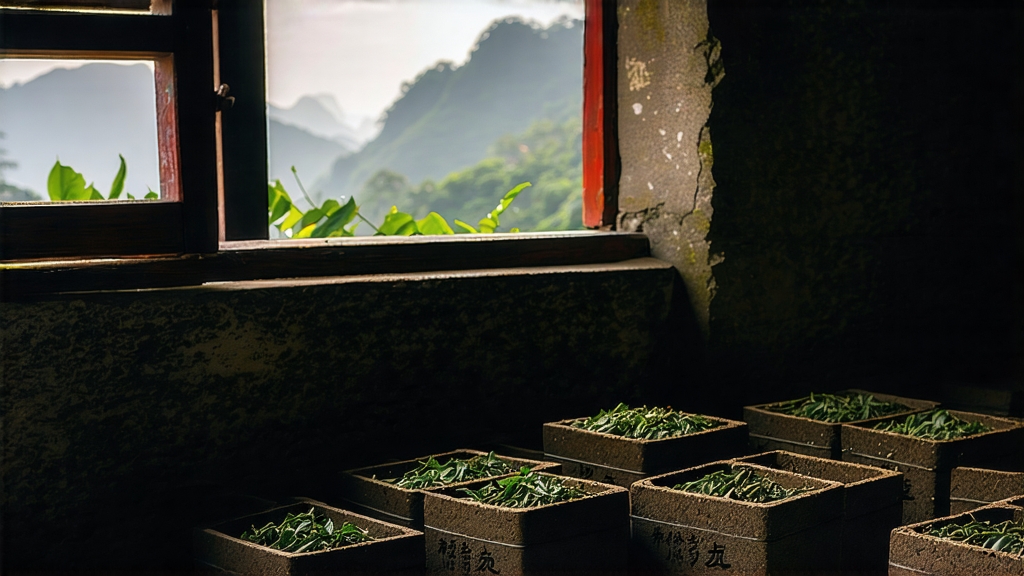
Tucked away in the subtropical mountains of southern China’s Guangxi Zhuang Autonomous Region, Liu Bao tea has spent four centuries quietly perfecting the art of microbial alchemy. To the uninitiated it is merely another dark brick on the shelf, yet to the growing circle of global tea hunters it is the most accessible gateway into the enigmatic world of Chinese dark teas—those post-fermented leaves whose value rises with every humid monsoon they survive. This article invites you to travel from the Qing-dynasty horse trails to the modern tea table, tracing how Liu Bao is made, why it tastes like a walk through a wet forest after a storm, and how to coax its velvet depth into your own porcelain cup.
-
Historical footprints in betel-nut mud
Liu Bao takes its name from the small administrative village of Liu Bao in Wuzhou prefecture, once the last navigable port on the Xun River before the rapids that barred larger boats. From the late Ming onward, compressed baskets of dark leaves were loaded here onto bamboo rafts, floated down to the Pearl River delta, and then transshipped to Hong Kong and Southeast Asia. Miners in Malaya and rubber tappers in Singapore came to rely on the tea’s ability to settle oily diets and ward off humidity-induced rheumatism; dockside medicine men sold it alongside opium and bird’s-nest, advertising “cooling blood” and “digesting beef.” By the early twentieth century Liu Bao had become a currency of its own—one basket could buy a night’s lodging for an entire coolie gang. When the West discovered pu-erh in the 1990s, Liu Bao was still hidden in plain sight, stacked in the back of Kuala Lumpur provision shops, priced less than the paper it was wrapped in. Only after 2005, when Chinese collectors began searching for alternatives to the sky-rocketing Yunnan cakes, did Liu Bao re-enter the mainland market as a retro chic heirloom. -
From leaf to basket: the making of Liu Bao
The cultivar of choice is the medium-leaf Quntizhong, a seed-propagated population bush that retains more lignin than the tender clones favored for green tea. Picking occurs from April to September; one bud with the third or fourth leaf is preferred, because the thicker cuticle will withstand the forthcoming wet-piling without collapsing into compost. After conventional withering and sha-qing (pan-fire at 160 °C for eight minutes), the leaves are rolled until the epidermis cracks like parchment, exposing polyphenols to the yeasts that will soon colonize them. What follows is the defining step—wo dui, “wet piling,” a Guangxi echo of Yunnan’s pile-fermentation yet conducted in far thinner layers. Workers spray 28 °C river water over 70 kg leaf mounds only 30 cm high, then cover them with jute sacks and hemp canvas. Internal temperature is kept below 55 °C; every five hours the pile is turned by barefoot “tea swimmers” who shuffle through the mass like grape stompers, aerating and redistributing microbes. After 25–35 days the leaves have turned chestnut brown, and their astringent catechins have been converted into theaflavins, theabrownins, and novel imidazole alkaloids that give Liu Bao its trademark sweetness. The pile is then sun-dried on bamboo trays for three consecutive mornings, achieving 12 % residual moisture—high enough to keep fermentation alive yet low enough to discourage pathogenic molds.
Basket compression is the next hallmark. Seven kilograms of dried leaf are steamed for 90 seconds, then funneled into cylindrical bamboo husks woven from river reeds. A worker stands inside the basket, stamping with his heel until the leaves are rock solid; the bamboo is laced shut with rattan hoops and left to air-dry. During the subsequent decades the tea will inhale the reedy volatiles of the basket, adding a green-bamboo top note that connoisseurs can identify blindfolded.
- Aging: the second fermentation
Unlike pu-erh, Liu Bao is rarely sold young. State-owned factories such as the Wuzhou Tea Plant traditionally label their baskets with a four-digit code: the first two numbers indicate the year production began, the latter two the expected warehouse. The baskets are stacked in humid underground chambers whose clay walls maintain 28 °C and